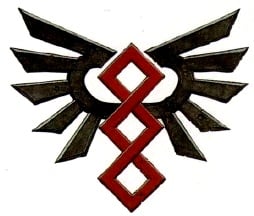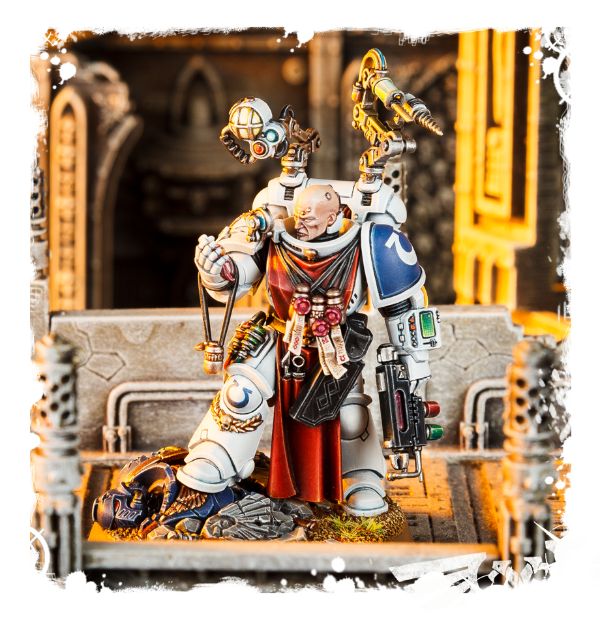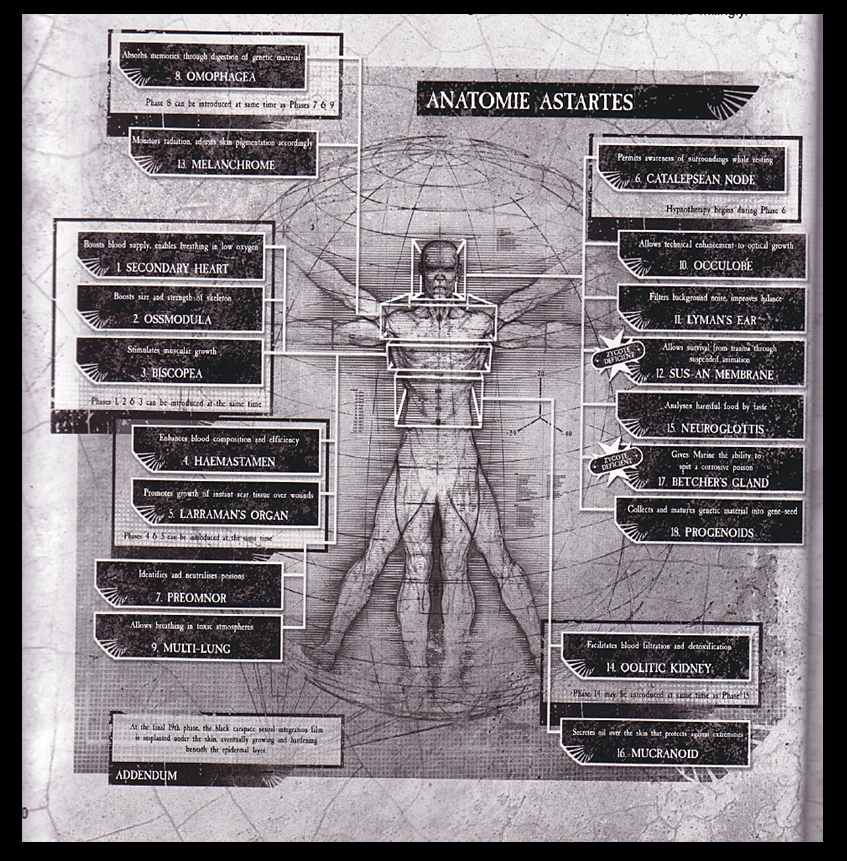40K Lore: Adeptus Astartes Gene-seed

Today we delve into that which defines the Adeptus Astartes from their fellow man – the chapter’s future and its living past. Its’ most precious resource – Gene-seed.
Gene-seed is the unique genetic material used to transform a normal human into a super-human Space Marine.
Overview
A table showing the calculated chances of geneseed mutation in the First Founding chapters.
It is used to grow the artificial organs which distinguish an Adeptus Astartes from an ordinary human and helps alter the human’s biology to accept the implanted organs. Gene-seed is a Space Marine Chapter‘s most precious resource and is conserved by extracting the progenoid glands from fallen Battle-Brother‘s for the return to the chapter’s fortress-monastery.
Several chapters have unique gene-seed flaws which cause differences in their Marines’ physiology and behavior. These differences can be merely cosmetic (for instance, all Death Spectres are albinos), while others can have drastic effects that are either a blessing or a curse (or both) for their chapters, such as the Blood Angels or the Space Wolves.
Some chapters’ gene-seed is inherently more stable than others, and variations in certain Chapters’ methods of implantation have resulted in further degradation in some cases. The gene-seed of the Ultramarines is considered the most stable and thus they are the most preferred source of gene-seed for creating new Space Marine Chapters.
History
Origins
Even before the Emperor had unified Terra, his armies included genetically altered warriors, the Thunder Warriors. Although these soldiers were more powerful than the later Space Marines, they were less in number and had a shorter lifespan. It was during this period that the techniques for restructuring genetic codes were perfected. Individual germ-cells, called gene-seeds, were isolated and genetically modified, eventually being used to create specific organs which could be implanted into a warrior.
The development of these organs took many centuries, and the research was, in fact, an off-shoot of the aborted Primarch project. The Primarchs were god-like beings whose powers far outstripped even that of a “regular” Space Marine. Samples of genetic tissue were taken from each of the fetal Primarchs and used to create the gene-seed of the original twenty Space Marine Legions. Thus each of the original Legions (and therefore their Successor Chapters) inherited some traits associated with their specific Primarch.
Post-Heresy
The events of the Horus Heresy revealed weaknesses in some Legions’ gene-seed. In some cases, these defects had been heightened by the accelerated cultivation techniques used to keep the Legions at full strength. After the Heresy and the break-up of the original Legions, genetic banks were established on Terra to produce and store Space Marine gene-seed. These banks were to provide all genetic material for new Space Marine Chapters. To prevent cross-contamination of these genetic stocks, the gene-seed of each of the individual Legions was isolated, so all new Space Marines would receive gene-seed solely from one specific source.
The gene-seed of the Traitor Legions was placed under a time-locked stasis seal (rather than being destroyed as many at the time assumed had happened).
Subsequent Foundings
After the Heresy, the Space Marine Legions were divided into smaller Chapters. The genetic materials of some Chapters were considered purer than others, and thus, at the time of the 41st Millennium, over half of the thousand known Chapters are descended from Ultramarines genetic stock, either directly or through one of their Second Founding Chapters.
A Marine’s gene-seed may be rendered useless by exposure to high levels of radiation. Also, over time a Chapter’s gene-seed may change through genetic mutations, so that specific implants become corrupted, producing new effects in Marines, or becoming useless altogether. Corruption in the chapter’s genetic material can lead to the chapter’s extinction. This is why gene-seed must constantly be monitored for mutations. Each Chapter is obliged to send 5% of its genetic material to the Adeptus Mechanicus. The first purpose for this is that it enables the Adeptus Mechanicus to monitor the health of each Marine Chapter. Secondly, it enables the Adeptus Mechanicus to store gene-seed with a view to founding new Chapters.
The Grey Knights are unusual in that the source of their gene-seed is unknown.
The Twenty-First Founding (also known as the Cursed Founding) is notable in that its focus was on perfecting and removing deficiencies in flawed gene-seed. Unfortunately, many of the Chapters created at this time have developed genetic idiosyncrasies, mutations that strain the tolerance of the Inquisition and threaten these Chapters’ survival.
Implantation and Reproduction
The gene-seed of a Chapter is a precious resource, so it is only given to the most worthy of candidates. Each Chapter has its own traditions and procedures for the selection of recruits, but all are subjected to rigorous testing and genetic screening before the process begins.
During the later stages of the implantation process, a recruit will often serve as a Space Marine Scout.
Reproduction of gene-seed is possible through the Progenoid glands – an implant whose sole purpose is the replication of gene-seed. A mature gland can be removed by an Apothecary and new organs artificially cultured from them. This is the only source for new implants, so a Chapter depends on its Marines to create other Marines. In the battle-mysticism of the Astartes, the gene-seed is regarded spiritually – though a fallen Marine’s body is dead, he lives on as gene-seed which returns to the Chapter.
Apothecaries remove Progenoids after they have matured or if a Marine has died in combat.
Organs
There are nineteen implanted organs – some of which only work properly (or at all) in the presence of other implants. Therefore the removal, mutation or failure of one organ can affect the precise functioning of the others. Because of this, and the fact that each Chapter’s gene-seed belongs to that Chapter alone, different Chapters display different characteristics and use different sets of implants and methods of implantation. Throughout the implantation process, the Marine must undergo various forms of conditioning for the implanted organs to develop and become part of his physiology.
The Primaris marines are marked by a handful of newly designed organs that more closely mirror the founding Primarch of their associated First Founding Chapter.
Chapters with known gene-seed flaws
- Black Dragons: Bony mutation of the forehead, elbows, and forearms caused by a malfunctioning Ossmodula zygote.
- Blood Angels: The Black Rage and the Red Thirst, sometimes known collectively as The Flaw.
- Blood Drinkers: Thirst for blood, expressed in both drinking rituals and in combat.
- Blood Ravens: Eidetic memory and inability to experience R.E.M. sleep.
- Death Spectres: Albinism, as a result of a defective Melanchromic Organ
- Excoriators: The Darkness
- Imperial Fists: Missing Betcher’s Gland and Sus-an Membrane
- Raven Guard: Missing Mucranoid and Betcher’s Gland. Pale skin, dark eyes.
- Salamanders: Onyx-black skin, bright red eyes (caused by a malfunctioning Melanchromic Organ, together with a reaction to the radiation of their homeworld, Nocturne)
- Space Wolves: Enlarged canine teeth and Mark of the Wulfen (see also Canis Helix).
Chaos Space Marines
The renegade Legions and Chapters maintain the process of gene-seed implantation and harvesting, allowing recruits to be turned into Marines. The specifics of the renegade Marines’ methods are unclear, but it is known that Fabius Bile provides recruits for some traitors in return for slaves and other resources.
Nearly all of the Traitor Legions’ gene-seed suffers from some kind of instability, though it is debated in the Imperium whether this is caused by some inherent “rot” that was present before the Horus Heresy, or simply the result of constant exposure to the warp inside the Eye of Terror. Whatever the cause, this instability hampers the Chaos Space Marines‘ ability to create new Marines.
For this reason, the Traitor Legions will sometimes raid the strongholds of Imperial chapters to steal stable gene-seed, which is a prized resource within the Eye.
Learn All About Creation of an Astartes
~What one Astartes organ do you most want for yourself?








